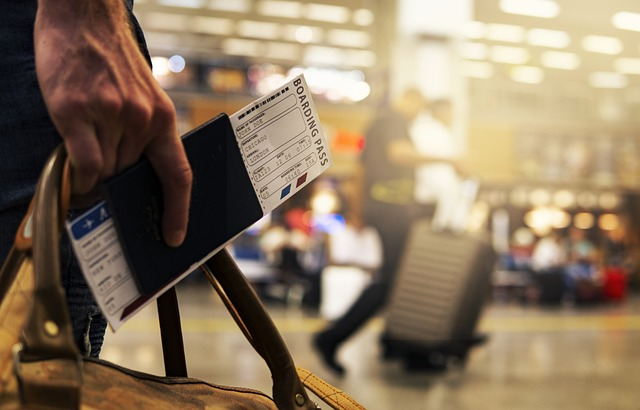What is Per Diem?
Per diem is a daily allowance companies give to their employees when they go on business trips. It’s money to cover meals, lodging, and other small expenses.
Work-related travel expenses can get expensive quickly. You’ve got to eat three meals a day (maybe even more), find a place to sleep at night, and take care of any little things that come up.
That’s where per diem comes in handy. It ensures that employees get enough money to cover all these expenses without having to dig into their own pockets. The amount of per diem given can vary depending on where you’re going and what industry you work in.
With a comprehensive per diem policy, employees don’t have to stress about saving all their receipts and filling out complicated expense reports. And employers don’t have to spend hours reviewing those reports and ensuring everything adds up.
How does Per Diem work?
Here are the essential components of a business travel per diem policy.
Determining Eligible Reimbursement Days
To understand how per diem payment works, we first need to figure out how many days are eligible for reimbursement. The duration of your business trip determines this. Let’s say you went on a three-day business trip – that means you can potentially receive per diems for those three days.
How Employers Distribute Per Diems
Once the number of eligible days is established, employers have different ways of distributing per diem payments. Some companies provide direct payments upfront, while others reimburse employees after they return from their trips.
Additional Considerations and Policies
It’s important to note that there may be additional considerations or policies related to per diem payments, depending on your company’s guidelines. These policies could include specific rates for different locations, meal allowances, and any limitations or restrictions on what expenses can be covered by per diems.
Benefits of Per Diem Payments
Per diem payments offer several benefits for both employers and employees when it comes to managing travel expenses.
- Simplified Expense Tracking: With predetermined daily rates, employees don’t need to keep track of individual receipts for every expense incurred during their trips.
- Reduced Administrative Burden: By using per diems, employers can streamline the reimbursement process and reduce the administrative effort required to process individual expense reports.
- Budget Control: Per diems help businesses budget travel expenses in advance, ensuring costs are managed effectively.
- Flexibility: Employees have the freedom to decide how they want to use their per diems within the allocated amount. They can choose where they eat or stay without worrying about submitting receipts.
What are Per Diem Rates and Reimbursements?
Per diem rates are predetermined amounts that employers provide to cover daily expenses during employee travel. These rates include meals, accommodation, transportation, and other incidental costs. Instead of reimbursing employees for the actual expenses they incur, per diem rates offer a simpler way to manage travel expenses.
Per diem reimbursement can be based on the actual number of days traveled or a flat rate determined by the employer. This means that employees receive a fixed amount for each day they are away on business. For example, if an employee is on a three-day trip and the per diem rate is $100 per day, they would receive $300 in total for their travel expenses.
Different Methods for Calculating Per Diem Rates
Employers have a couple of options. Here are the most common methods:
- Standard Rates: Some companies use standard per diem rates that apply to all employees, regardless of location or industry. This approach simplifies things and ensures consistency across the board.
- Specific Rates: Other employers prefer to set specific per diem rates based on factors like location, industry, and employee rank. For example, employees traveling to high-cost areas may receive a higher per diem rate than those in lower-cost areas.
Variations in Per Diem Rates
Per diem rates can vary depending on several factors. Let’s take a look at some of these variations:
- Location: The cost of living can differ significantly from one place to another. As a result, per diem rates may be higher in expensive cities compared to more affordable ones. Different cities or regions may have different standard rates for lodging and meals. For example, a hotel stay in New York City might cost more than one in a smaller town.
- Industry: Certain industries may require employees to travel frequently or visit locations with higher expenses. In such cases, employers might establish higher per diem rates for employees in those industries. For example, travel nurses who move from one assignment to another frequently benefit from these predetermined allowances. Substitute teachers who work in different school districts also find per diems helpful in managing their travel expenses.
- Employee Rank: Employees at different levels within an organization may receive different per diems based on their responsibilities and seniority. Higher-ranking employees may have higher per diem rates due to increased responsibilities and expectations.
However, it’s important to note that if employees spend less than the per diem rate on their actual expenses, they cannot pocket the difference. The purpose of per diems is to provide a reasonable estimate of expected costs while ensuring fair reimbursement.
How does Per Diem help with managing employee Travel Expenses?
Per diem is a fancy term that can make managing employee travel expenses much easier. Let’s break it down and see how it works.
Simplifying Expense Reimbursement
With per diem, businesses provide employees a fixed daily allowance to cover costs like meals and incidental expenses during business trips. This means no more fussing over complex expense reports or keeping track of every single receipt to reimburse out-of-pocket expenses.
Here’s how it helps:
- No more itemized receipts: Instead of collecting piles of receipts for each meal or expense, employees can simply use the per diem allowance without worrying about providing proof of purchase for every little thing.
- Less paperwork: Since there are no detailed expense reports to fill out, employees and employers save time on administrative tasks. It’s a win-win situation!
- Easy reimbursement: Employees receive their per diem allowance upfront or as part of their paycheck, eliminating the need to wait for reimbursement after submitting a business expense report.
Tracking Business Travel Expenses Made Simple
Per diem doesn’t stop at just covering meals and incidentals. It also includes mileage reimbursement, making it even easier to track and manage business travel expenses.
Here’s why it’s beneficial:
- Streamlined tracking: With mileage reimbursement included in the per diem allowance, employees don’t have to keep separate records or submit additional claims for their travel distances.
- Consistent rates: Per diem rates often include standardized mileage allowances based on government regulations or company policies. This ensures fair compensation across all business travelers.
- Transparent reporting: Employers can easily monitor and analyze travel costs by reviewing the total per diem expenses employees incur. It provides clear visibility into business travel spending.
Per Diem Rates Pros & Cons
Pros:
- Provides a straightforward way to track business travel expenses.
- Employees don’t need to spend time calculating and documenting each expense.
- Provides a predictable budget for business travel expenses.
- Reduced paperwork.
Cons:
- May not accurately reflect the actual costs of meals and accommodations in certain locations.
- Employees may be limited in their choices for meals and accommodations.
- Does not take into account individual differences in dietary needs or preferences.
- May not include other expenses such as transportation or incidentals.
What are the tax implications of Per Diem Expenses?
It’s essential to understand the tax implications for both employers and employees. These expenses are treated differently from regular wages by tax authorities. Knowing how they are taxed can help businesses stay compliant and make the most of tax benefits.
Deductible Expenses: One key aspect of per diem expenses is that they are often considered deductible business expenses. This means employers can deduct these expenses from their taxable income, reducing their overall tax liability. For employees, per diems received as part of a bona fide reimbursement plan may not be included in their taxable income.
Recordkeeping Requirements: To ensure proper deduction and compliance with IRS regulations, it’s crucial to maintain accurate records of per diem expenses. Employers should keep detailed records of expense reports, including dates, locations, and amounts spent on lodging, meals, and incidental expenses. Employees should also keep track of their actual expense receipts if they choose not to use the standard per diem rate.
IRS Regulations Regarding Accountable Plans: The Internal Revenue Service (IRS) has specific guidelines known as accountable plans that outline the requirements for reimbursing employee business expenses. To qualify as an accountable plan, employers must have a clear policy for reporting and substantiating expenses within a reasonable timeframe.
By following these regulations, businesses can ensure that reimbursements are not considered taxable income for employees.
Frequently Asked Questions
Here are the most common questions about per diems for business travel.
Can I use Per Diem rates for all types of employee travel?
Yes, per diem rates can be used for various types of employee travel, including domestic and international trips. However, it’s essential to consult local laws and regulations regarding per diem allowances in different regions or countries.
Are there any limitations on what Per Diem covers?
Per diem typically covers meals, lodging, and incidental expenses during business trips. However, certain costs like transportation to and from the destination may not be included in the standard per diem rate. Make sure to clarify any specific exclusions with your company’s policy or accounting department.
How often are Per Diem rates updated?
Per diem rates are usually updated annually by government agencies such as the General Services Administration (GSA) in the United States. These updates account for changes in cost-of-living adjustments and reflect current market conditions.
While the GSA established per diem rates for federal government employees, many businesses have adapted them as standards for travel expenses. Federal employees often work with a federal agency travel manager.
What if the actual Travel Expenses exceed the Per Diem rate?
In some cases, employees may be eligible for additional reimbursement if their actual expenses exceed the designated per diem rate. This is known as an “overage” subject to company policies and approval processes.
What is Per Diem for Business Travel – Final Thoughts
By implementing per diem rates and reimbursements, you can simplify the process, ensure fairness, and provide clarity to your employees. Remember, managing travel expenses doesn’t have to be a headache.
With per diem, you can streamline the reimbursement process and eliminate the need for tedious expense reports. It’s like having a personal financial GPS for your business trips – guiding you toward cost-effective choices and helping you stay on track.
Contact us if you have more questions about per diems or to apply for a small business loan. Our business funding experts can help you find financing for business travel or other expenses.

















